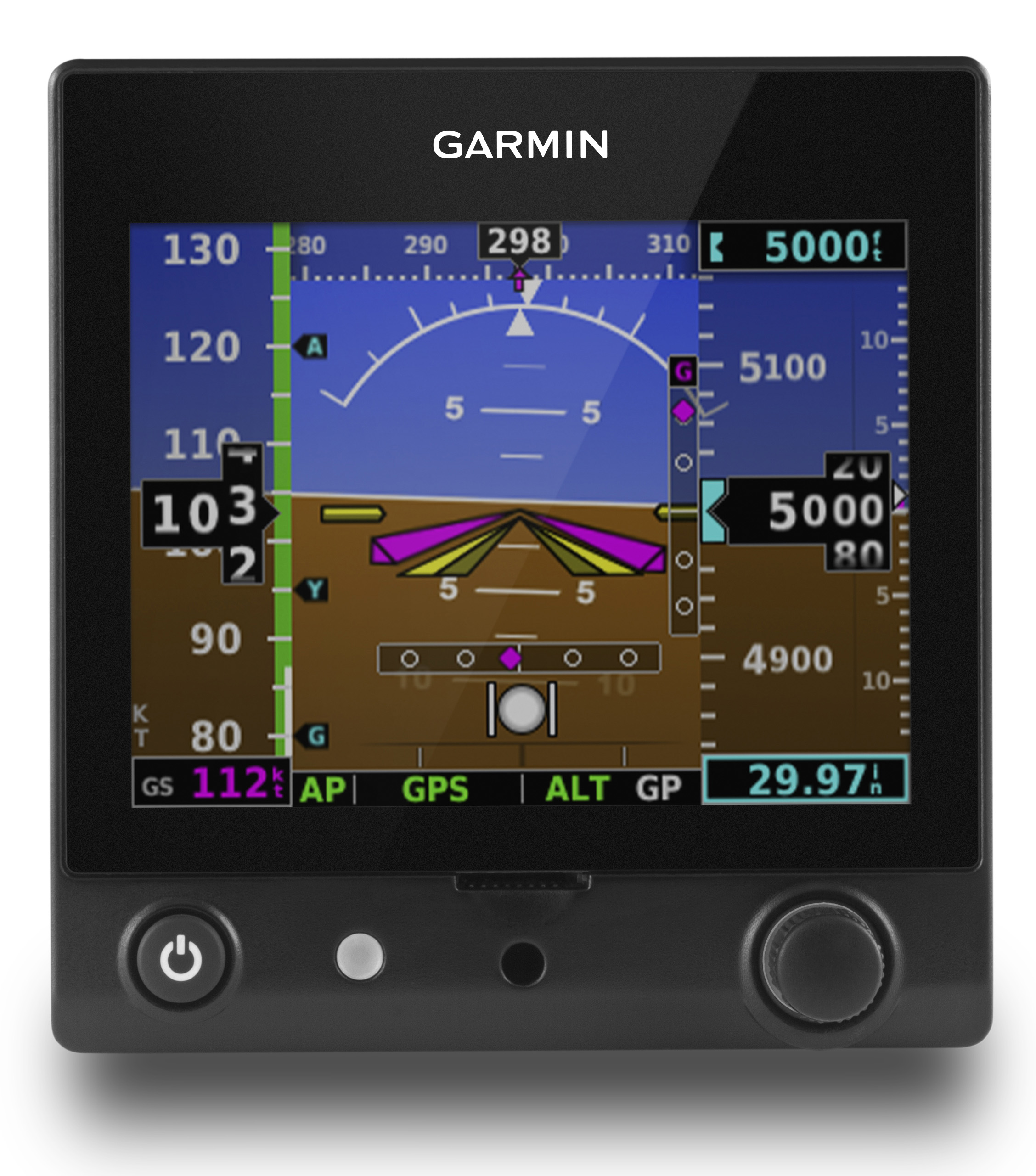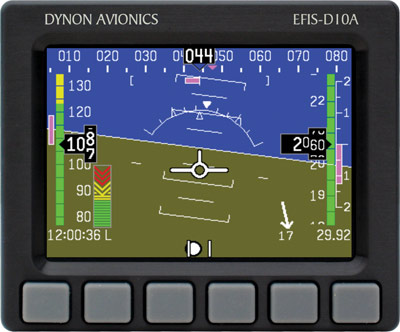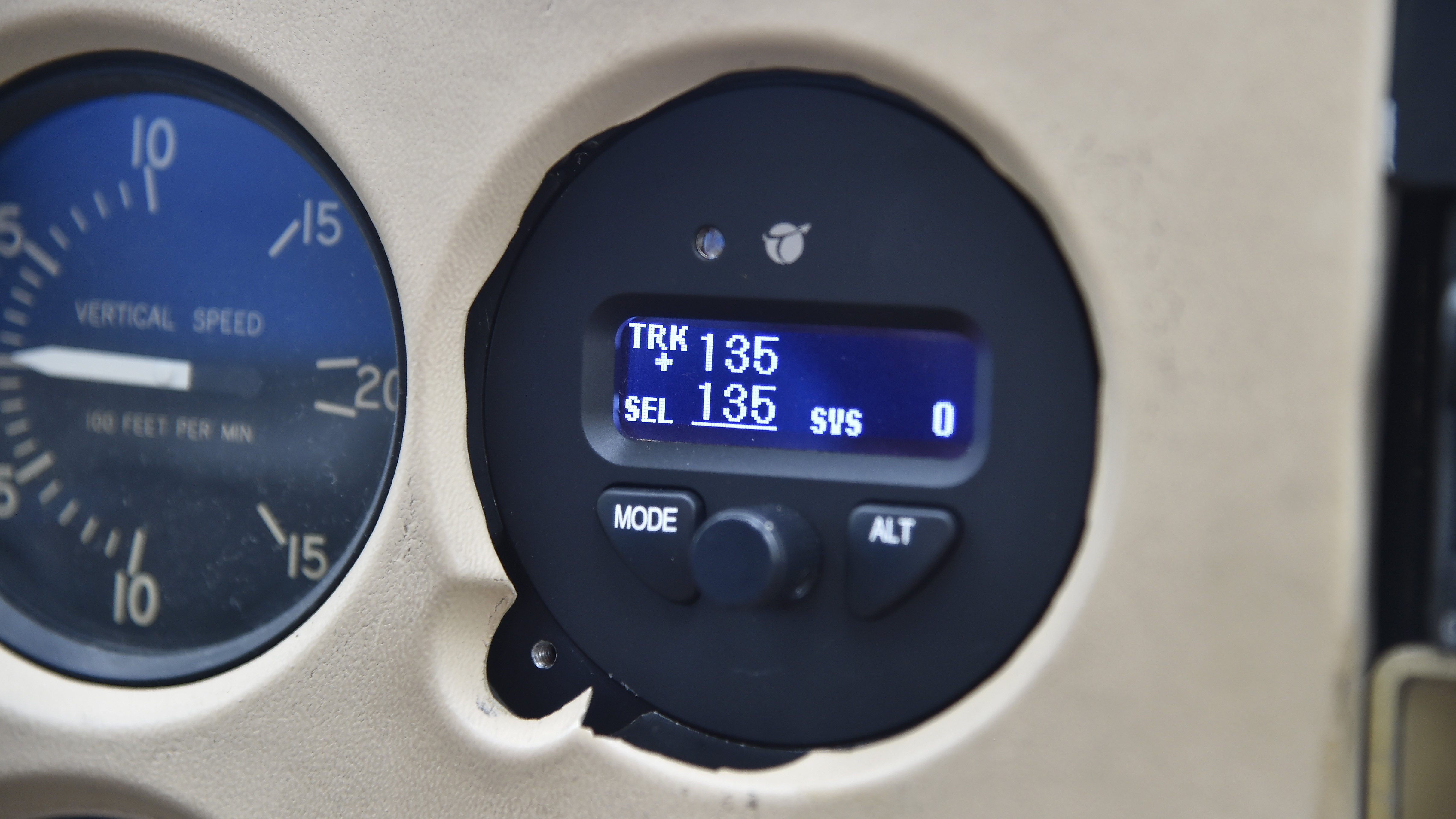Non-TSO possibilities abound
After years of waiting and watching the proliferation of avionics in the experimental market, pilots of certified aircraft are starting to see the arrival of lower-cost, safety-enhancing, non-technical standard order products—some of which were on display at AirVenture in Oshkosh, Wisconsin. And, judging from pilots’ reactions, they are impressed with what they saw.

On July 24, Garmin announced an STC for its G5 electronic flight instrument for more than 500 models of certified aircraft. The solid-state unit can be used as a primary attitude indicator or turn coordinator in VFR and IFR operations. It is a secondary source for airspeed, vertical speed, and altitude.
The G5 is the centerpiece of the panel in the AOPA Sweepstakes 172, on display at the AOPA tent, and members took notice. Dozens of pilots stopped by the aircraft to view the G5 and take photos of the panel. Many said they owned similar vintage 172s—the sweepstakes aircraft is a 1978 172N—and were picturing how the G5 might fit in their panels. The G5’s retail price is $2,149, which includes the STC, installation kit, and a four-hour backup battery.

Dynon and the Experimental Aircraft Association announced in April that Dynon’s EFIS D10A had received STC approval as an attitude indicator replacement for certain makes and models of Piper and Cessna aircraft. The news was heralded with both anticipation and dismay that the STC’s approved model list was somewhat narrow—applicable to Cessna 150s and 152s, and Piper PA-28 and PA-38 aircraft. On July 25, Dynon said the STC has been expanded to include the seven-inch D100, and the approved model list has grown to include Cessna 175, 177, 182, and Piper PA-24 and PA-32 models. The Dynon STC will be available through EAA for $100, according to EAA reports.

TruTrak Flight Systems of Springdale, Arkansas, brought a Cessna 172 to AirVenture equipped with the company’s Vizion autopilot. TruTrak announced July 16 that it is seeking STCs for the Vizion as well as the Eco, an autopilot system it created with Levil. The Vizion, which requires connection to the pitot and static system, offers emergency level mode, control wheel steering, bank angle select, altitude hold, vertical speed select, altitude select, and altitude pre-select. If connected to a GPS, it can offer track select and GPS navigation.

“It’s very good for us and the industry in general,” TruTrak President and CEO Andrew Barker said. He said the Eco, introduced to the experimental market in 2015, received an enthusiastic reception from owners of certified aircraft as well as the FAA. “Because of that immensely positive response, we decided it should go through certification,” he said. “We are equally excited about the pathway [to the certified market] for the Vizion and how that will go,” he said. “What we want to do is get the safety of an autopilot to the GA fleet.”
“These are special times,” Aspen Avionics President and CEO John Uczekaj said July 26, stating that aviation organizations, the FAA, and manufacturers are coming together to effect a sea change. The result is that the industry is looking at avionics not just at a manufacturer’s level, but at a situational awareness and installation level, he said. “Manufacturer price is not the whole picture,” he said.
As the FAA moves forward with rewriting airworthiness standards under Part 23, Uczekaj said Aspen supports the changes but does not want an inconsistent application of the rules. “We appreciate all organizations for the first time are banding together to find a right way to do it,” he said. But he stopped short of discussing Aspen’s plans for non-TSO products. Noting that “it’s a natural progression for aviation to move into the twentieth century,” Uczekaj said he thinks the industry is seeing the tip of the iceberg in terms of innovation and lower costs.
“We’d love to get rid of backups,” Uczekaj said. “That vacuum pump is less reliable than any electronic device, including an iPad.”




